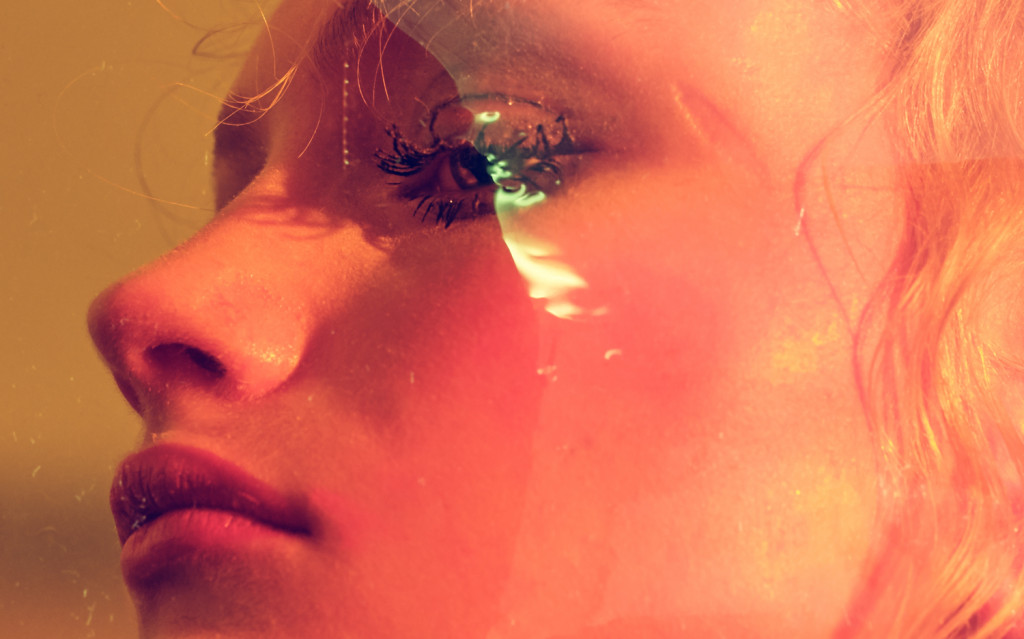
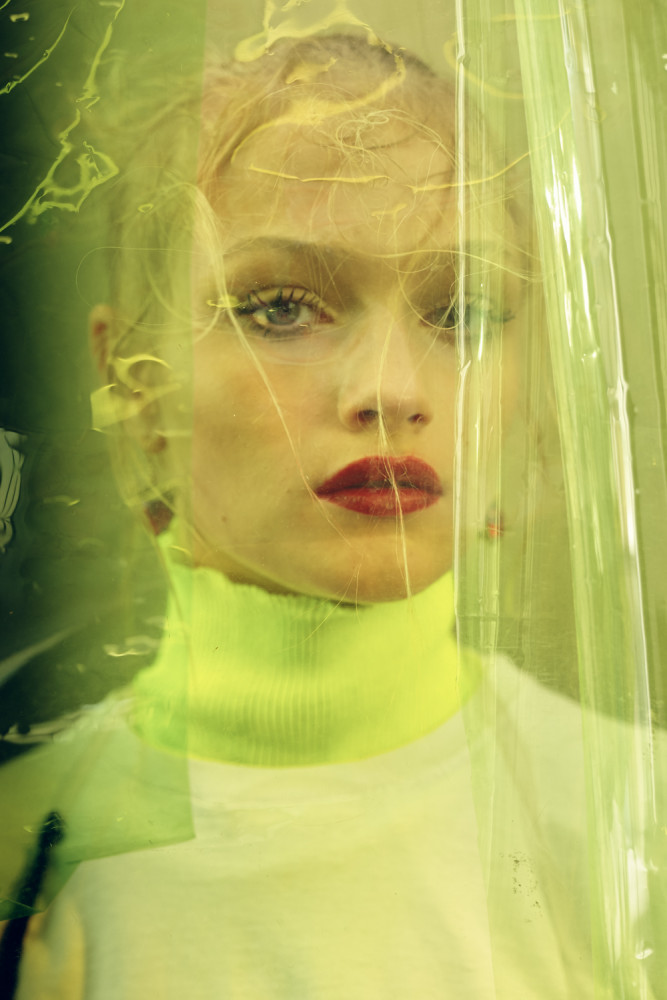
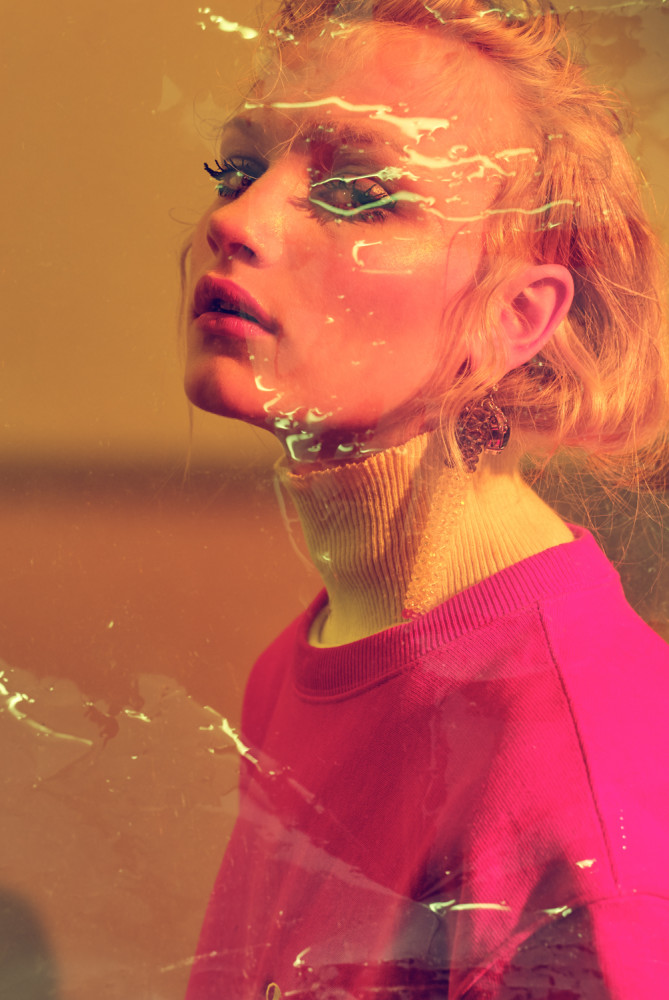
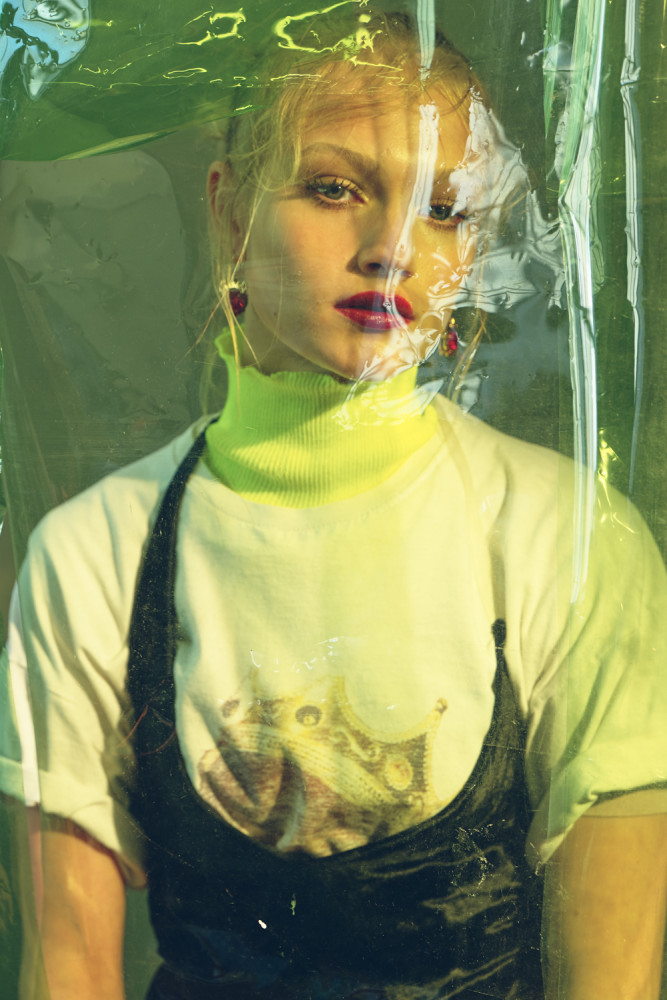
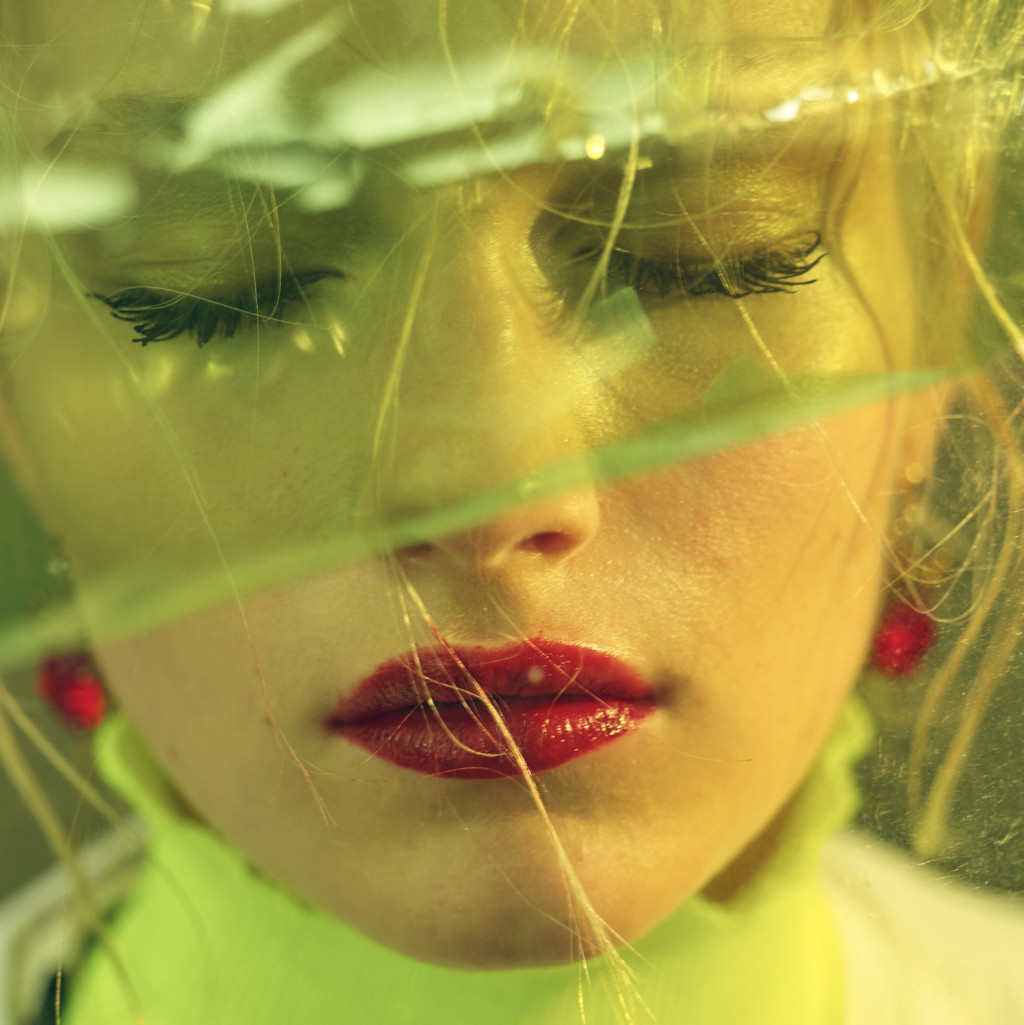
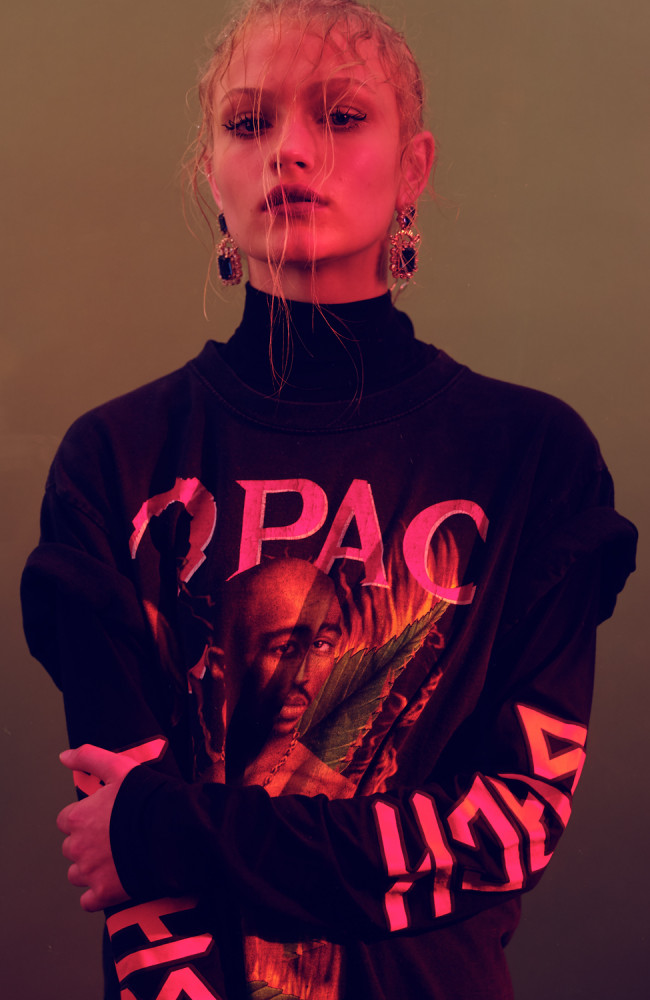

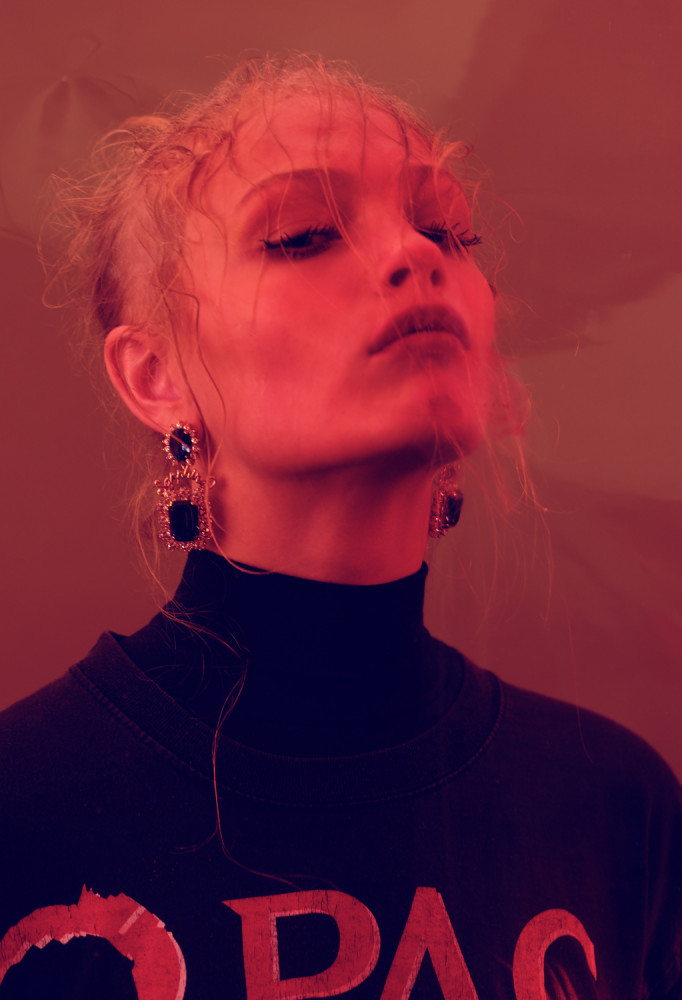
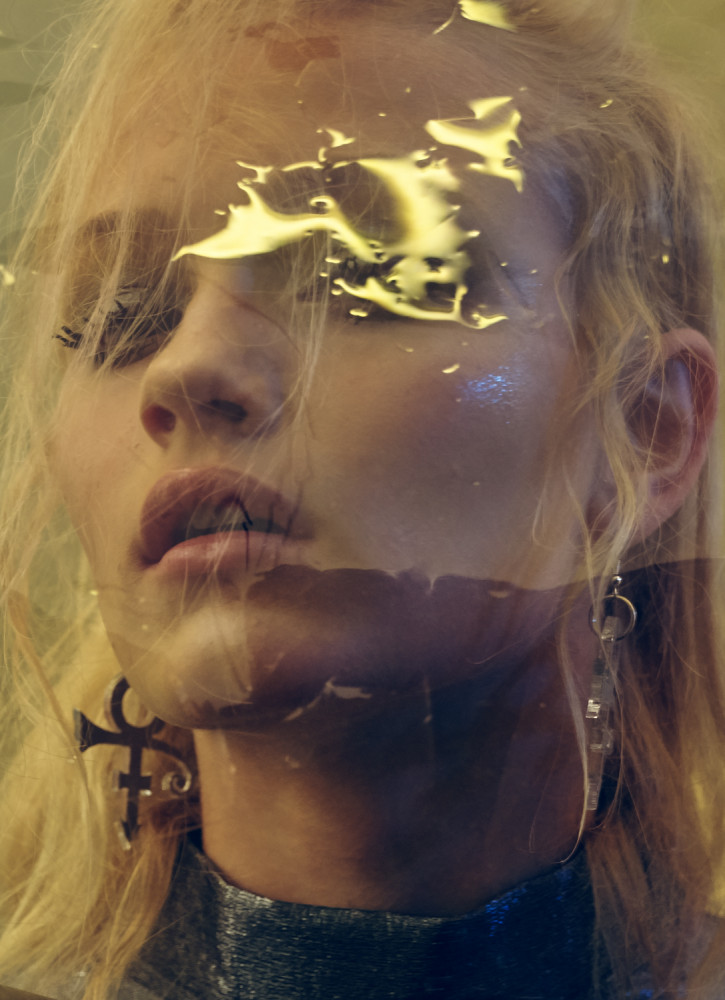
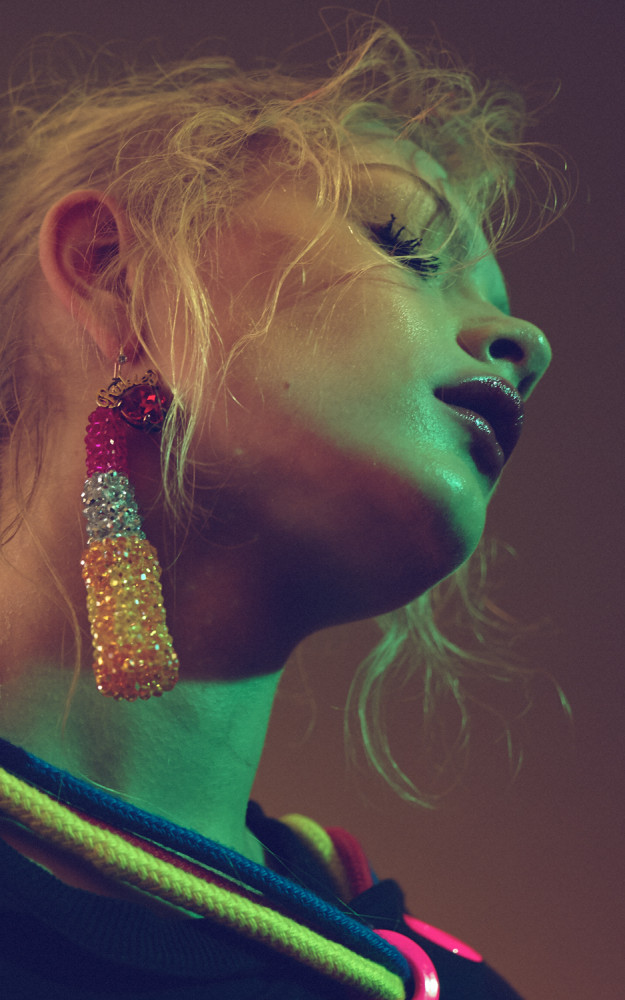
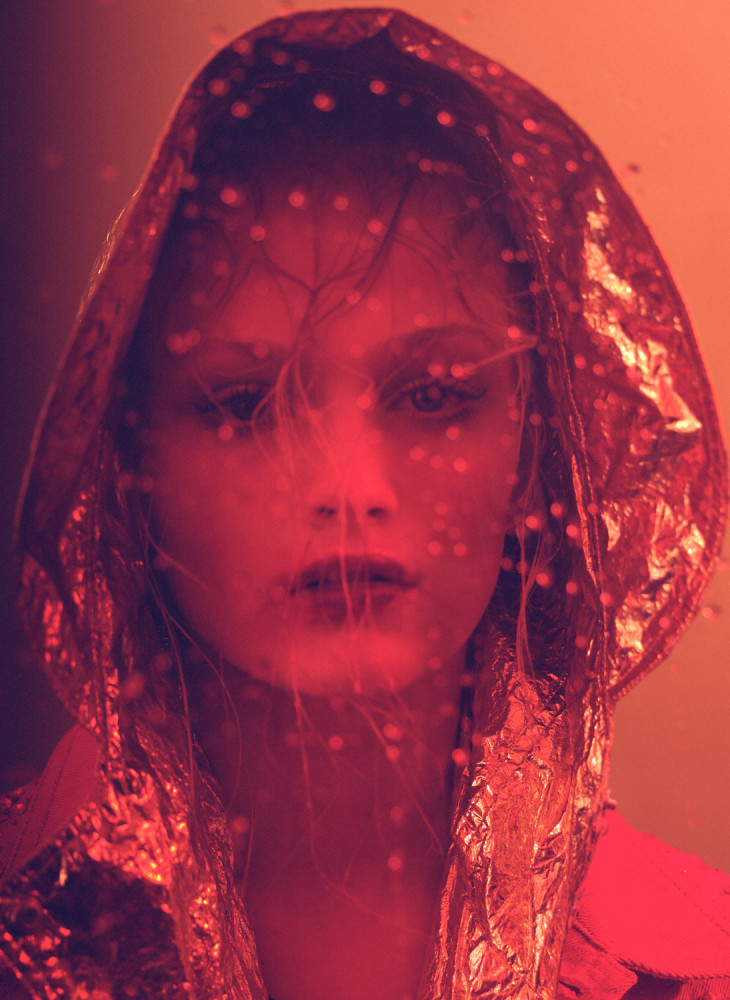
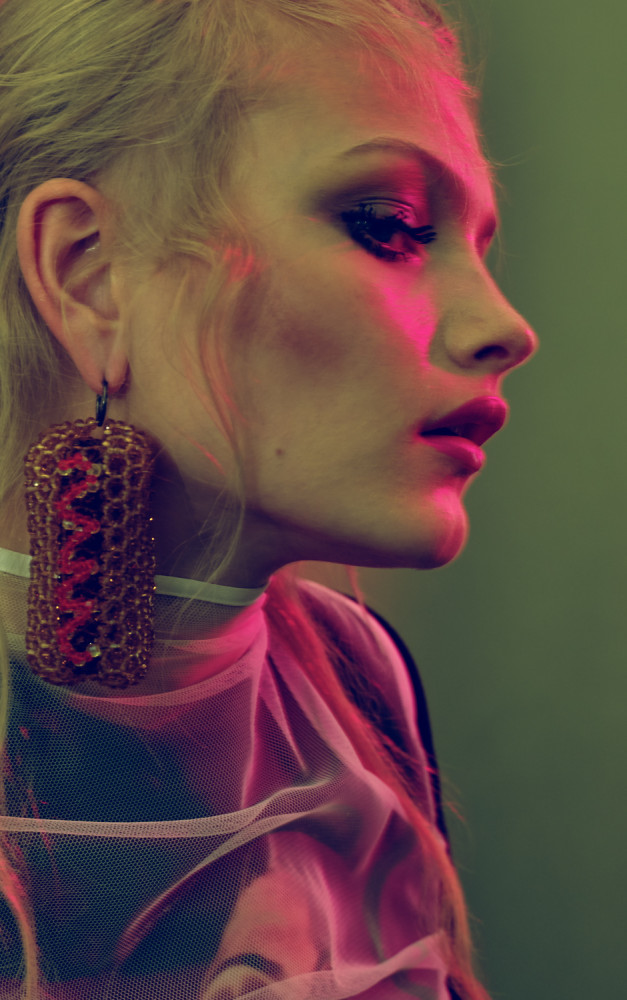
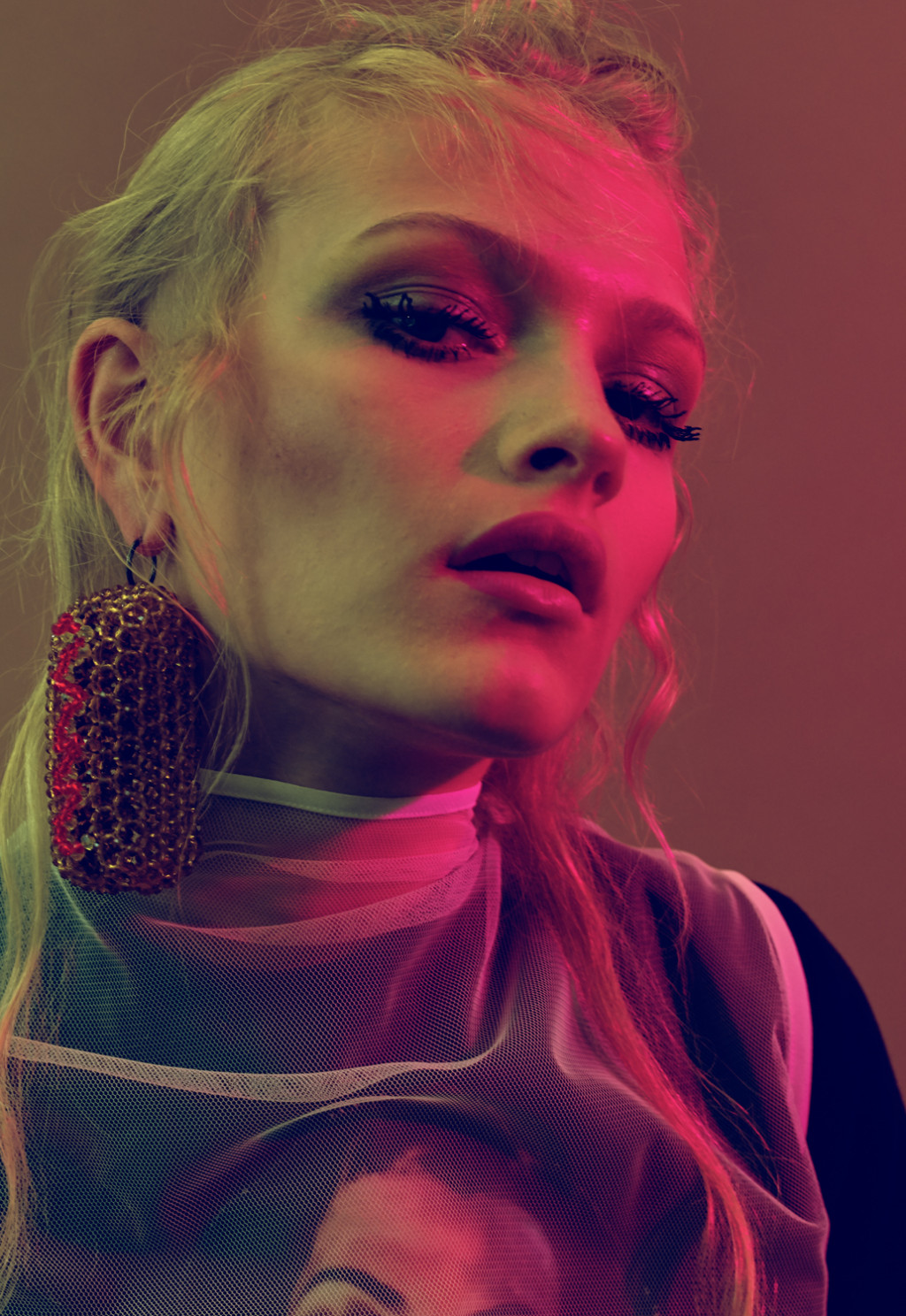
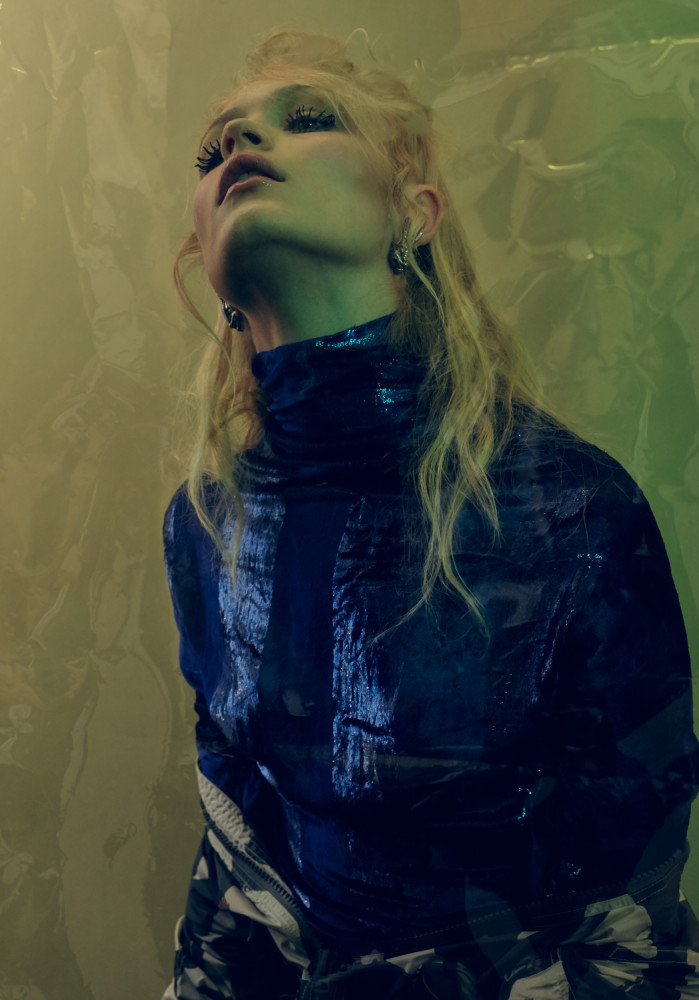














INTERVIEW
Christian Rinke
PHOTOGRAPHY Christian Rinke ART DIRECTION/STYLING Fernando Torres HAIR Shukeel Murtaza MAKEUP Anastasia Borovik MODEL Harriet @ Elite London CAMERA Leica SL with Vario-Elmarit-SL 24–90 mm f/2.8–4 Asph.
Christian Rinke approaches the theme of beauty from a very different perspective. After reveals what remains following a night of wild partying. Stylist Fernando Torres was in charge of finding the right look with top brands such as House of Holland, Topshop Unique, Burberry Brit, and Ashish, among others.
S Magazine: You are of German and Peruvian descent and you know both countries very well. To what degree do the two cultures influence your photography?
Christian Rinke: That’s a really good question; but even though I get asked it very often, I can’t really describe it. I believe there are different phases when I’m influenced by one of the two cultures, but also phases where both influence me at the same time – it has to do with instinct and, as a result, with how I approach situations. Sometimes I’m well organised, but I spend too much time on just one thing. Sometimes I’m too temperamental and I act too fast. It usually works out best when both extremes are in balance.
How did you get into fashion photography? Initially you tended to work in more of a documentary manner.
Back in the day, I completed my training at a distinguished commercial photography studio in Hamburg. It took me a long time to forget all the stiffness, the up-tightness that I was taught with regard to photography. To finance my documentary projects, I assisted various still-life and fashion photographers. Still-life was not my thing; with regard to fashion, I gradually acquired a taste for it.
How would you describe your photographic style?
I always try to remain as “real” as possible. I like to experiment with different things – and I’m not in the slightest bit interested in perfect beauty. This is reflected in the models I cast, but also in the stories and themes I photograph. Diversity and “realness” are important aspects of my fashion photography.
In the portrait-beauty story After, you photograph through foils. What was your intention in doing so?
We did the photo shoot in a very small studio in East London and, in fact, we wanted to work with neon. Unfortunately, the means were pretty limited… so we began playing around – I and Fernando, a stylist and art director I work with quite frequently in London. We wanted a rather bedraggled look to create a bit more character. The foils worked well for this purpose, precisely because they were scratched and a bit broken.
What role do colours play in your photography?
In this case, I think my Peruvian genes, my Andes experiences, play a role: colour is important to me. It doesn’t necessarily have to be multi-coloured, but it should be in line with my perception – my colours often get praised.
What does the decision to work on location or in the studio depend on?
It depends on the possibilities. The question at the forefront is what’s best for the picture. One thing in clear, whether in the studio or outside, I prefer to work with daylight.
How much creative freedom do you retain when on assignment for a client? How do you deal with that?
Some clients want me to be creative, some are more rigid in their vision, with ideas that may be different to my equally rigid vision. In the latter case I have to compromise, and I try to meet both the demands of the client as well as my own, so that I finish the photo shoot feeling satisfied.